Stanislav Kondrashov on What is Machine Learning? A Beginner’s Guide to AI Advancements
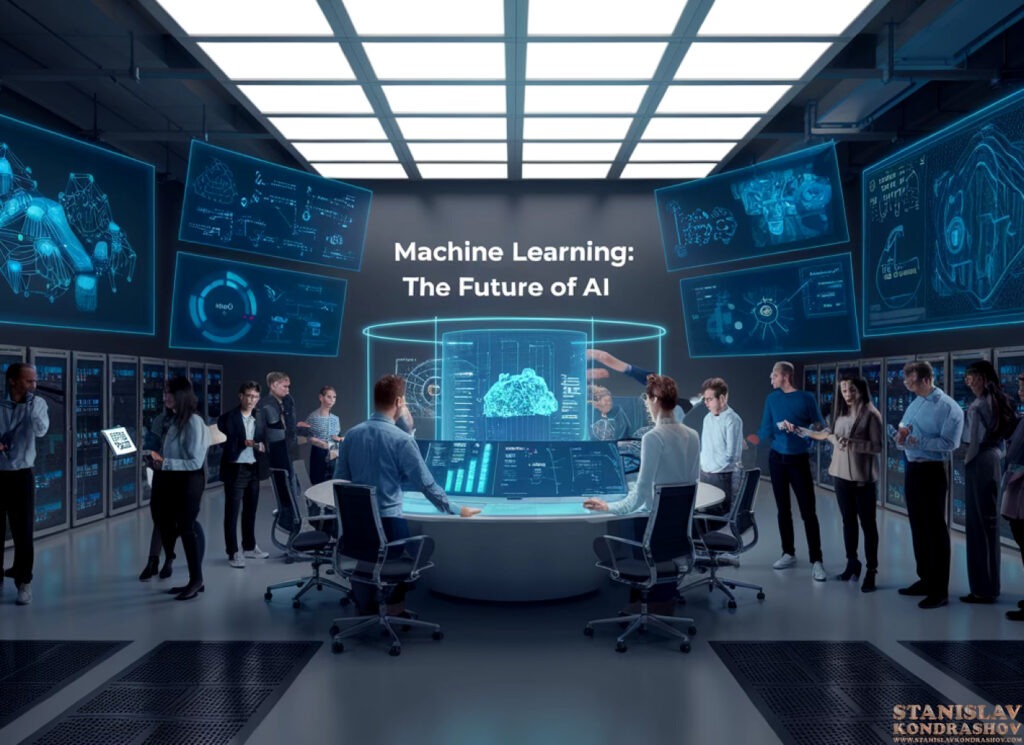
Have you ever wondered how your smartphone predicts the next word you’re about to type or how Netflix seems to know exactly what shows you’ll love? Welcome to the fascinating world of Machine Learning, a groundbreaking technology revolutionizing industries and reshaping our daily lives. As Stanislav Kondrashov explains, Machine Learning is not just a buzzword—it’s the driving force behind many daily AI advancements.
But what exactly is Machine Learning, and why should you care? Whether you’re a tech enthusiast or simply curious about the future of technology, understanding Machine Learning is crucial in our increasingly AI-driven world. From healthcare to finance, entertainment to education, Machine Learning is silently working behind the scenes, making our lives easier and more efficient.
In this beginner’s guide, we’ll demystify Machine Learning, exploring its building blocks, real-world applications, and intersection with AI. We’ll also delve into how to start with Machine Learning, discuss important ethical considerations, and peek into the exciting future. So, buckle up as we embark on this enlightening journey through the realm of Machine Learning—your gateway to understanding the AI revolution!
Defining Machine Learning
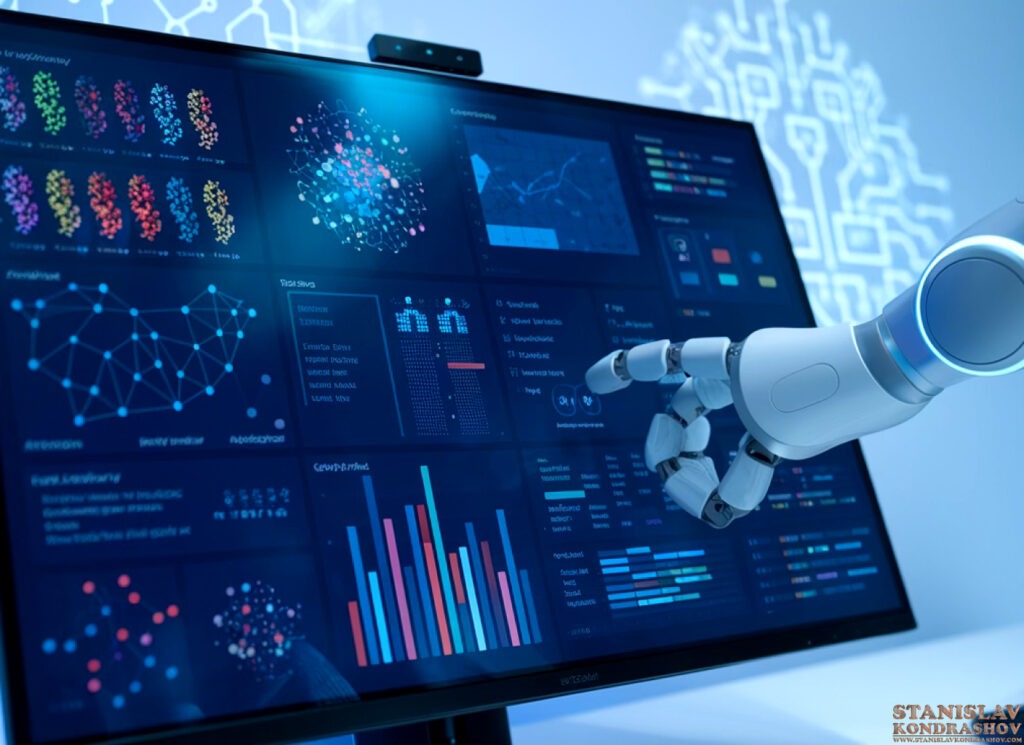
A. The core concept of ML explained
Machine Learning (ML) is a subset of Artificial Intelligence that focuses on developing algorithms and statistical models that enable computer systems to improve their performance on a specific task through experience. At its core, ML allows machines to learn from data without being explicitly programmed for every scenario.
B. How ML differs from traditional programming
Traditional programming and Machine Learning differ significantly in their approach to problem-solving:
| Aspect | Traditional Programming | Machine Learning |
|---|---|---|
| Input | Rules + Data | Data |
| Output | Answers | Rules (Model) |
| Programming | Explicit instructions | Learning from examples |
| Adaptability | Limited | High |
| Complexity handling | Struggles with complex problems | Excels in complex scenarios |
In traditional programming, developers write specific instructions for every situation. ML, on the other hand, learns patterns from data and creates its own rules.
C. Types of Machine Learning algorithms
Machine Learning algorithms can be categorized into three main types:
Supervised Learning:
- Uses labeled data
- Examples: Classification, Regression
Unsupervised Learning:
- Works with unlabeled data
- Examples: Clustering, Dimensionality Reduction
Reinforcement Learning:
- Learns through interaction with an environment
- Examples: Game AI, Robotics
Each type of ML algorithm has its strengths and is suited for different kinds of problems and datasets. The choice of algorithm depends on the specific task, available data, and desired outcomes.
The Building Blocks of Machine Learning
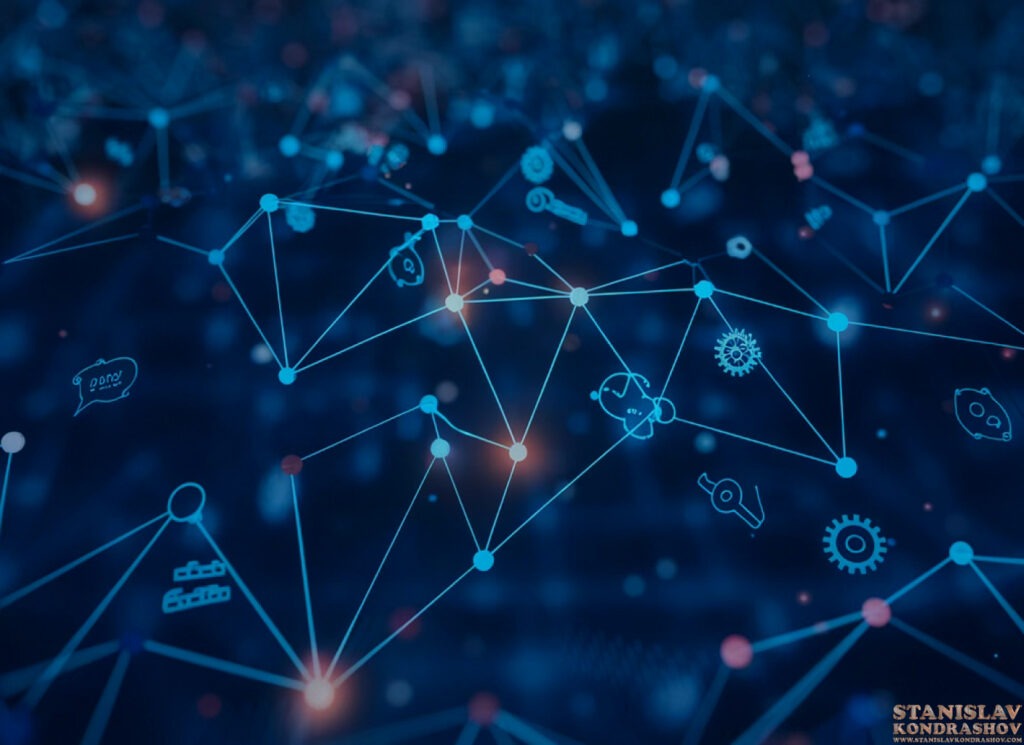
A. Data: The fuel for ML models
Data is the lifeblood of machine learning models. Without high-quality, diverse, relevant data, even the most sophisticated algorithms would be useless. Here’s why data is crucial:
- Volume: Large datasets provide more examples for models to learn from
- Variety: Diverse data helps models generalize better
- Velocity: Real-time data enables dynamic learning
- Veracity: Accurate data leads to more reliable predictions
| Data Type | Description | Example Use Case |
|---|---|---|
| Structured | Organized in a predefined format | Customer databases |
| Unstructured | No predefined format | Social media posts |
| Semi-structured | Partially organized | JSON files |
B. Algorithms: The engine of ML
Algorithms are the core of machine learning, processing data to identify patterns and make predictions. Common types include:
- Supervised learning (e.g., regression, classification)
- Unsupervised learning (e.g., clustering, dimensionality reduction)
- Reinforcement learning
C. Computing power: Enabling complex calculations
The rise of GPU-accelerated computing and cloud platforms has dramatically increased the processing capabilities available for machine learning tasks. This enhanced computing power allows for:
- Training larger models
- Processing more data
- Faster iteration and experimentation
D. Human expertise: Guiding the process
While machines do the heavy lifting, human expertise remains crucial in:
- Selecting appropriate algorithms
- Fine-tuning model parameters
- Interpreting results and making decisions
Human insight is essential for ethical considerations and ensuring machine learning solutions align with business goals and societal values.
Now that we’ve explored the building blocks of machine learning let’s examine how these components interact in real-world applications.
Real-world Applications of Machine Learning

Healthcare advancements
Machine learning has revolutionized healthcare, offering groundbreaking diagnosis, treatment, and patient care solutions. One of the most significant applications is medical imaging analysis, where AI algorithms can detect abnormalities with remarkable accuracy. For example:
- Early detection of cancer through image analysis
- Predicting patient outcomes based on historical data
- Personalized treatment plans using genetic information
| Application | Description | Impact |
|---|---|---|
| Medical Imaging | AI-powered analysis of X-rays, MRIs, and CT scans | Faster and more accurate diagnoses |
| Drug Discovery | Predicting drug interactions and efficacy | Accelerated development of new treatments |
| Patient Monitoring | Real-time analysis of patient data | Improved patient outcomes and reduced healthcare costs |
Financial industry innovations
The financial sector has embraced machine learning to enhance decision-making processes and improve customer experiences. From fraud detection to algorithmic trading, AI transforms financial institutions’ operations.
Personalized recommendations in e-commerce
E-commerce giants like Amazon and Netflix have mastered the art of personalized recommendations using machine learning algorithms. These systems can suggest products or content that align with individual tastes by analyzing user behavior, purchase history, and preferences.
Autonomous vehicles and transportation
The development of self-driving cars represents one of the most exciting applications of machine learning in transportation. These vehicles use complex algorithms to interpret sensor data, make split-second decisions, and safely navigate various driving conditions.
Natural language processing breakthroughs
Thanks to machine learning, Natural Language Processing (NLP) has made significant strides. From virtual assistants like Siri and Alexa to language translation services, NLP breaks down communication barriers and enhances human-computer interactions.
As we’ve seen, machine learning applications span across various industries, fundamentally changing how we approach complex problems. Next, we’ll explore the intricate relationship between machine learning and artificial intelligence, shedding light on how these fields intersect and complement each other.
The Intersection of Machine Learning and AI
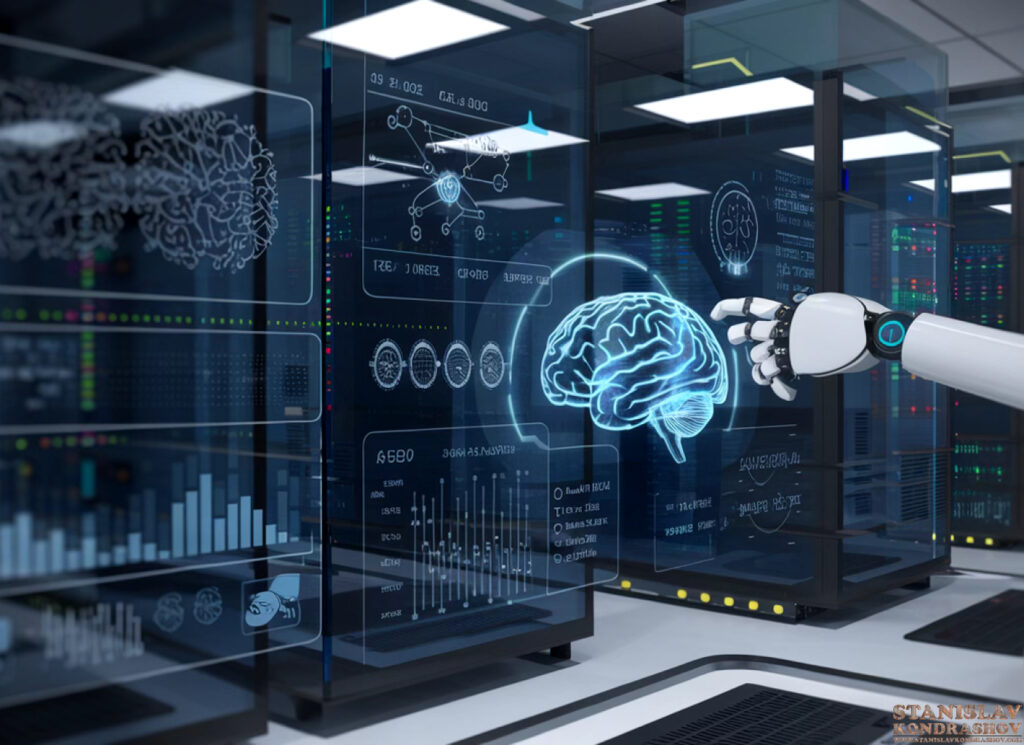
How ML contributes to AI development
Machine Learning (ML) is a crucial component in the development of Artificial Intelligence (AI). It provides AI systems with the ability to learn from data and improve their performance over time without explicit programming. Here’s how ML contributes to AI development:
- Pattern recognition
- Decision-making capabilities
- Adaptive learning
- Predictive analytics
| ML Contribution | Impact on AI Development |
|---|---|
| Data processing | Enables AI to handle large datasets |
| Algorithm refinement | Improves AI accuracy and efficiency |
| Feature extraction | Enhances AI’s understanding of complex data |
| Automated learning | Reduces need for constant human intervention |
The role of neural networks
Neural networks play a pivotal role in advancing AI through Machine Learning. These interconnected nodes, inspired by the human brain, enable AI systems to process complex information and make intelligent decisions. Key aspects of neural networks include:
- Layered architecture for deep learning
- Ability to handle non-linear relationships in data
- Adaptability to various types of input data
Deep learning: Taking ML to the next level
Deep learning represents a more advanced form of Machine Learning, pushing AI capabilities further. This sophisticated approach utilizes multi-layered neural networks to process vast amounts of data and extract high-level features. Deep learning has revolutionized AI in several ways:
- Improved natural language processing
- Enhanced computer vision capabilities
- More accurate predictive modeling
- Autonomous decision-making in complex environments
As we learn more about the world of Machine Learning and its impact on AI, it’s important to understand how to get started with these technologies.
Getting Started with Machine Learning

Essential skills for beginners
To embark on your machine learning journey, you’ll need to develop a solid foundation in several key areas. Here’s a list of essential skills for beginners:
- Programming (Python or R)
- Mathematics (Linear Algebra, Calculus, Statistics)
- Data manipulation and visualization
- Understanding of algorithms
- Problem-solving and critical thinking
Popular ML tools and frameworks
Machine learning practitioners rely on various tools and frameworks to streamline their work. Here’s a comparison of some popular options:
| Tool/Framework | Language | Primary Use | Ease of Use |
|---|---|---|---|
| TensorFlow | Python | Deep Learning | Moderate |
| PyTorch | Python | Deep Learning | Easy |
| scikit-learn | Python | General ML | Easy |
| Keras | Python | Deep Learning | Easy |
| R | R | Statistical ML | Moderate |
Online courses and resources
The internet offers a wealth of learning opportunities for aspiring machine learning professionals. Some recommended resources include:
- Coursera’s Machine Learning course by Andrew Ng
- Fast.ai’s Practical Deep Learning for Coders
- edX’s Machine Learning Fundamentals
- Google’s Machine Learning Crash Course
- Kaggle’s Learn Machine Learning tutorials
Building your first ML project
Now that you have a grasp of the basics, it’s time to apply your knowledge. Start with a simple project, such as image classification or sentiment analysis. Use publicly available datasets and follow these steps:
- Define your problem
- Gather and preprocess data
- Choose an appropriate algorithm
- Train and evaluate your model
- Iterate and improve
Remember, practice is key to mastering machine learning. As you progress, you’ll gain confidence and tackle more complex projects.
Ethical Considerations in Machine Learning

Bias in ML algorithms
Machine learning algorithms can inadvertently perpetuate and amplify existing biases present in training data. This can lead to unfair or discriminatory outcomes, particularly in sensitive areas such as hiring, lending, and criminal justice.
| Type of Bias | Description | Example |
|---|---|---|
| Selection Bias | Occurs when training data is not representative of the entire population | Using data from a single demographic to train a facial recognition system |
| Measurement Bias | Results from errors or inconsistencies in data collection | Inconsistent grading practices in educational datasets |
| Algorithm Bias | Stems from the design of the algorithm itself | Favoring certain features over others in decision-making processes |
To mitigate bias, it’s crucial to:
- Diversify training data
- Regularly audit algorithms for fairness
- Implement bias detection and correction techniques
Data privacy concerns
As machine learning systems process vast amounts of personal data, protecting individual privacy becomes paramount. Key concerns include:
- Data breaches exposing sensitive information
- Unauthorized use of personal data for profiling or targeted advertising
- Re-identification of anonymized data through advanced ML techniques
To address these issues, organizations must:
- Implement robust data security measures
- Adhere to data protection regulations (e.g., GDPR, CCPA)
- Practice data minimization and purpose limitation
Transparency and explainability in ML models
The complexity of many ML models, particularly deep learning systems, often makes it challenging to understand how they arrive at specific decisions. This “black box” nature raises concerns about:
- Accountability in high-stakes decisions
- Ability to detect and correct errors
- Public trust in AI-driven systems
To enhance transparency and explainability:
- Use interpretable ML models when possible
- Implement techniques like LIME or SHAP for model interpretation
- Provide clear documentation on model inputs, outputs, and limitations
Addressing these ethical considerations will be crucial as we move forward, ensuring that machine learning technologies benefit society while minimizing potential harm.
The Future of Machine Learning

Emerging trends in ML research
Machine learning (ML) research is advancing at a rapid pace, with several exciting trends emerging:
- Federated Learning
- Explainable AI (XAI)
- Automated Machine Learning (AutoML)
- Quantum Machine Learning
| Trend | Description | Potential Impact |
|---|---|---|
| Federated Learning | Enables training models on distributed datasets without centralizing data | Enhanced privacy and data security |
| Explainable AI | Focuses on making ML models more interpretable and transparent | Increased trust and adoption in critical sectors |
| AutoML | Automates the process of applying ML to real-world problems | Democratization of ML technology |
| Quantum ML | Leverages quantum computing for ML algorithms | Exponential speedup in processing complex datasets |
Potential breakthroughs on the horizon
As ML research progresses, we can anticipate groundbreaking advancements:
- Artificial General Intelligence (AGI): Systems that can perform any intellectual task that a human can do
- Self-improving AI: Algorithms capable of enhancing their own performance without human intervention
- Brain-computer interfaces: Direct communication between the human brain and external devices, powered by ML
How ML will shape various industries
Machine learning is poised to revolutionize numerous sectors:
- Healthcare: Personalized medicine, early disease detection, and drug discovery
- Finance: Advanced fraud detection, algorithmic trading, and personalized financial advice
- Transportation: Autonomous vehicles, optimized logistics, and predictive maintenance
- Education: Adaptive learning systems and personalized curriculum development
- Agriculture: Precision farming, crop yield prediction, and automated pest control
As these advancements unfold, we’ll witness a transformation in how we work, live, and interact with technology. ML’s potential to solve complex problems and drive innovation across industries is immense, making it a critical field to watch in the coming years.
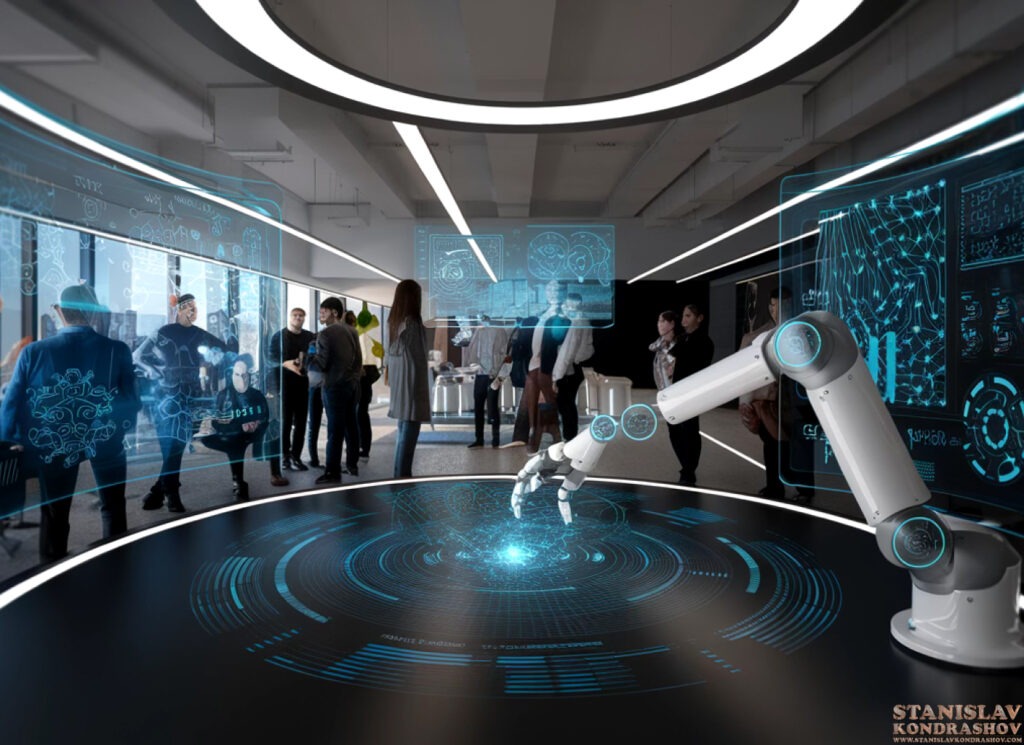
Machine learning is revolutionizing how we approach problem-solving and decision-making across various industries. From its fundamental building blocks to real-world applications, this powerful technology is driving advancements in artificial intelligence and shaping our future. As we’ve explored, machine learning intersects with AI in fascinating ways, opening up new possibilities for innovation and progress.
Numerous resources and tools are available to help those interested in diving into the world of machine learning. However, it’s crucial to approach this field with a strong ethical foundation, considering the potential impacts on society and individuals. As machine learning continues to evolve, it promises to unlock even more exciting opportunities, transforming industries and improving our daily lives in ways we can only begin to imagine.
By Stanislav Kondrashov






















